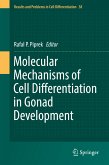Over the past decade, there has been a vast amount of interest in the subject of human sperm competition. This volume brings together, in one place, a key set of classic and contemporary papers that have examined possible adaptations to sperm competition in humans. In addition to classic papers by Robin Baker & Mark Bellis, it includes later work by other researchers - some developing their ideas, some refuting their findings. As is to be expected in any comparatively new area of investigation, there are conflicting findings and unresolved issues. This, however, should encourage rather than discourage future research in this field. This collection of papers is essential reading for students of evolutionary biology, evolutionary psychology, human sexuality and researchers considering conducting work in this area.
Dieser Download kann aus rechtlichen Gründen nur mit Rechnungsadresse in A, B, BG, CY, CZ, D, DK, EW, E, FIN, F, GR, HR, H, IRL, I, LT, L, LR, M, NL, PL, P, R, S, SLO, SK ausgeliefert werden.









